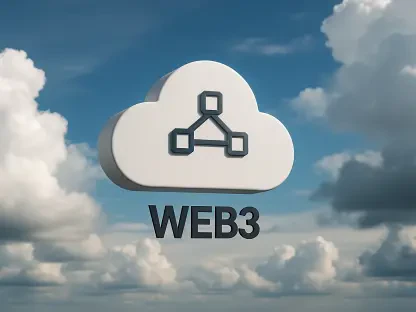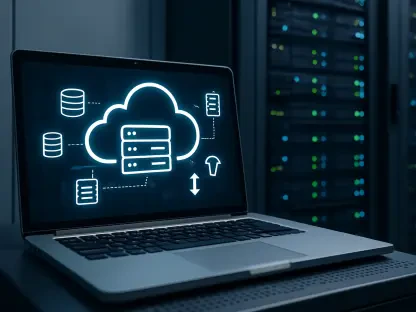How Are Health Systems Ensuring Security with Cloud Technology?
Health systems are employing various measures to ensure security with cloud technology. They are implementing strict access controls, utilizing advanced encryption methods, and regularly conducting security audits to protect patient data. Additionally, partnering with reputable cloud service providers who comply with health regulations and industry standards is critical. These efforts aim to create a secure environment that safeguards sensitive health information while allowing the flexibility and efficiency offered by cloud technology.
The transition of healthcare IT systems from traditional data centers to cloud-based environments is a growing trend, driven by the need for improved efficiency, scalability, and security. This shift to cloud technology offers numerous benefits, such as enhanced disaster recovery capabilities and better data accessibility, but it also brings unique challenges that healthcare organizations must address to ensure the security of sensitive patient data. This article explores how health systems are managing security in the cloud, focusing on the shared responsibility model, cloud management tools, hybrid cloud environments, and the importance of peer support and continuous vigilance.
Understanding the Shared Responsibility Model
Defining Roles and Responsibilities
To enhance productivity and ensure smooth operations, it is critical to clearly define the roles and responsibilities of each team member.
One of the fundamental aspects of cloud security is the shared responsibility model, which clearly delineates the security obligations of both healthcare organizations and cloud service providers. For healthcare organizations to effectively protect their sensitive data in the cloud, they must thoroughly understand their specific responsibilities. These responsibilities include securing identities, managing access rights, and ensuring the protection of patient data. On the other hand, cloud providers are typically responsible for securing the infrastructure, which includes elements such as containers, virtual machines, and the physical data centers themselves. This clear delineation of roles is crucial for effective cloud security management, as it helps prevent any gaps in security coverage that could be exploited by cyber threats.
To further bolster security, healthcare organizations must implement comprehensive identity and access management (IAM) systems. These systems help control who has access to sensitive data and ensure that only authorized personnel can view or modify it. Encryption of data both in transit and at rest is another key measure that healthcare providers should adopt. By encrypting data, organizations can ensure that even if the data is intercepted during transmission or accessed without authorization, it remains unreadable and secure. Regularly updating security protocols to address emerging threats and vulnerabilities is also essential. By staying proactive and continuously adapting their security measures, healthcare providers can significantly reduce the risk of data breaches and other security incidents.
Proactive Data Protection
Healthcare organizations must take a proactive approach to data protection to ensure the security of their cloud-based systems. Implementing robust IAM systems is a critical first step, as these systems play a vital role in managing user identities and controlling access to sensitive data. This includes enforcing strong password policies, utilizing multi-factor authentication (MFA), and regularly reviewing access permissions to ensure that only authorized personnel have access to critical information. By rigorously managing access rights, healthcare providers can minimize the risk of unauthorized access and potential data breaches.
Encrypting data both in transit and at rest is another essential measure for safeguarding patient information. Data encryption ensures that even if data is intercepted during transmission or accessed without authorization, it remains unreadable and secure. Healthcare organizations should also implement regular security updates and patches to address known vulnerabilities and protect against emerging threats. This proactive approach to data protection includes conducting regular security audits, penetration testing, and vulnerability assessments to identify and mitigate potential risks. By staying vigilant and continuously improving their security posture, healthcare providers can better protect their cloud environments from cyber threats and ensure the confidentiality, integrity, and availability of patient data.
Selecting the Right Cloud Management Tools
Selecting the right cloud management tools is crucial for optimizing cloud operations, cost management, and ensuring security. Evaluating the features, compatibility with existing systems, and user-friendliness of various tools can help organizations make informed decisions. Efficient tools can streamline processes, enhance productivity, and support scalability, making them invaluable assets in the modern cloud-centric IT landscape.
Evaluating Cloud Models
Choosing the appropriate cloud model is a critical decision for healthcare organizations as it directly impacts their security posture, operational efficiency, and overall IT infrastructure. Factors such as the organization’s capabilities, physical profile, and budget play a significant role in determining the most suitable cloud model. Many healthcare providers start with Software as a Service (SaaS) applications, which typically have minimal security requirements and offer a lower barrier to entry. SaaS solutions are often easier to manage and require less in-house IT expertise, making them an attractive option for smaller healthcare organizations with limited resources.
As healthcare providers become more comfortable with cloud technology and their resources and expertise grow, they may gradually move to more complex models like Infrastructure as a Service (IaaS) or Platform as a Service (PaaS). IaaS provides organizations with greater control over their IT infrastructure, allowing them to customize and manage virtual machines, storage, and networking resources. PaaS, on the other hand, offers a platform for building, deploying, and managing applications without the need to manage the underlying infrastructure. Both IaaS and PaaS models offer higher levels of customization and flexibility but also come with increased security responsibilities. Healthcare organizations must carefully evaluate their needs, resources, and capabilities to select the right cloud model that balances security and operational efficiency.
Conducting Risk Assessments
Conducting risk assessments is a critical process for identifying potential threats and vulnerabilities within an organization. It involves evaluating the likelihood and impact of various risks and implementing strategies to mitigate them effectively. Proper risk assessment helps ensure that both human and technological resources are protected, ultimately contributing to the overall resilience and stability of the organization.
Robust risk assessment practices are essential when selecting cloud service providers and managing cloud security. Healthcare organizations must thoroughly vet potential providers to ensure they align with the organization’s security practices and controls. This vetting process involves evaluating the security features and certifications of the cloud provider, such as compliance with industry standards like HIPAA, ISO 27001, and SOC 2. Conducting thorough risk assessments helps healthcare organizations identify potential vulnerabilities and ensure that the chosen cloud solutions meet the specific needs of the organization.
Risk assessments should also include evaluating the provider’s data protection policies, incident response plans, and disaster recovery capabilities. Healthcare organizations must ensure that the cloud provider has robust measures in place to protect data, quickly respond to security incidents, and recover from potential disruptions. By conducting comprehensive risk assessments, healthcare providers can minimize risks, ensure compliance with regulatory requirements, and build a strong foundation for secure cloud adoption. Additionally, ongoing monitoring and periodic reassessments are essential to maintaining security and addressing any emerging threats or changes in the organization’s risk profile.
Embracing Hybrid Cloud Environments
Organizations are increasingly adopting hybrid cloud environments to balance the advantages of public and private clouds. This approach allows businesses to maintain control over sensitive data while leveraging the scalability and cost-efficiency of public cloud services. Adopting a hybrid cloud strategy also offers flexibility, enabling companies to respond to changing demands and workloads more effectively. As the technology continues to evolve, it is expected that hybrid cloud solutions will become even more integral to IT infrastructure.
Tailoring Cloud Strategies
Many healthcare organizations, such as ChristianaCare, have adopted cloud-first approaches, resulting in hybrid environments that combine on-premises and cloud-based solutions. These hybrid environments are designed to provide flexibility and scalability while maintaining robust security practices. By tailoring their cloud strategies to meet specific needs, healthcare providers can optimize their IT infrastructure for both performance and security. Hybrid cloud environments offer the best of both worlds, allowing organizations to leverage the benefits of cloud technology while retaining control over critical data and applications.
In a hybrid cloud environment, healthcare organizations can migrate non-sensitive workloads and applications to the cloud while keeping sensitive data and mission-critical applications on-premises. This approach allows organizations to take advantage of the cloud’s scalability and cost-efficiency for certain workloads, while ensuring that sensitive data remains within their control. Hybrid cloud strategies can also provide greater resilience and redundancy, as organizations can distribute their workloads across multiple environments to reduce the risk of downtime and data loss. By carefully planning and implementing hybrid cloud strategies, healthcare providers can achieve a balanced and secure IT infrastructure that meets their unique needs.
Ensuring Robust Security Practices
In hybrid cloud environments, it is crucial to maintain consistent security practices across all platforms to effectively protect patient data and ensure compliance with regulatory requirements. This includes implementing comprehensive monitoring and analytics tools, such as Splunk Cloud Platform and Microsoft Azure’s built-in dashboards, to provide real-time visibility into security events. These tools enable healthcare organizations to detect and respond to potential threats quickly, reducing the risk of data breaches and other security incidents.
Continuous investment in team skills and adopting practices like automation and observability further enhance cloud security. Automation can help streamline security processes, such as patch management and threat detection, reducing the likelihood of human error and ensuring that security measures are consistently applied across the entire IT environment. Observability tools provide deep insights into system performance and security, allowing organizations to identify and address potential vulnerabilities before they can be exploited. By maintaining robust security practices and leveraging advanced monitoring and automation tools, healthcare providers can effectively manage the complexities of hybrid cloud environments and protect their sensitive data.
Addressing Emerging Concerns
Virtual Care and “Hospital at Home” Models
The expansion of virtual care and the “hospital at home” model introduces new complexities in cloud security that healthcare organizations must address to ensure the protection of patient data. These models provide secure, reliable access to patient data from remote locations, but they also increase the potential attack surface, making it crucial for healthcare providers to implement stringent security measures. For instance, ensuring secure communication channels for telehealth consultations and remote monitoring systems is essential to prevent unauthorized access and protect patient privacy.
Multi-factor authentication (MFA) is a critical component of securing remote access to patient data. By requiring multiple forms of verification, such as a password and a temporary code sent to a mobile device, MFA adds an extra layer of security that makes it more difficult for unauthorized users to gain access. Additionally, healthcare organizations should implement secure communication protocols, such as end-to-end encryption, to protect data transmitted during virtual care sessions. Regularly updating and patching software used in virtual care applications is also essential to address vulnerabilities and protect against cyber threats. By adopting these security measures, healthcare providers can ensure that their virtual care and “hospital at home” models are both effective and secure.
Leveraging Peer Support Networks
Peer support networks play a vital role in providing emotional and practical assistance to individuals facing various challenges. These networks can offer a sense of community, shared experiences, and valuable advice, which can significantly enhance coping strategies and overall well-being. Through active involvement in peer support groups, individuals can gain confidence, reduce feelings of isolation, and develop resilient habits that contribute to long-term personal growth and success.
Platforms like Health-ISAC offer valuable peer support and information sharing, enhancing collective security by pooling knowledge and resources. For smaller healthcare organizations with limited budgets and internal threat intelligence capabilities, these networks provide critical insights into emerging threats and vulnerabilities. By leveraging the collective expertise and resources of the Health-ISAC community, healthcare providers can stay informed about the latest cyber threats and best practices for mitigating risks without the need for extensive internal threat intelligence solutions.
Health-ISAC and similar organizations facilitate information sharing through regular updates, threat alerts, and collaborative forums where healthcare organizations can discuss security challenges and strategies. Participating in these networks allows healthcare providers to benefit from the experiences and knowledge of their peers, gaining valuable insights into effective security measures and response strategies. Additionally, Health-ISAC offers training and resources to help healthcare organizations improve their security posture and stay ahead of emerging threats. By actively participating in peer support networks, healthcare providers can enhance their security capabilities and better protect their cloud environments from cyber threats.
Enhancing Security with Cloud-native Approaches
Adopting Zero Trust Security Models
Leveraging cloud-native security strategies, such as zero trust, can significantly bolster defenses and reduce the risk of unauthorized access to healthcare data. The zero trust model operates on the principle that threats can come from both inside and outside the network, requiring strict verification for every access request. This approach assumes that no user or device, whether within or outside the network, should be trusted by default. Instead, every access request is thoroughly verified based on multiple factors, including user identity, device health, and location.
Implementing zero trust principles involves several key practices. First, healthcare organizations must enforce strong access control policies that require users to authenticate themselves multiple times and from various factors before accessing sensitive data. This often involves the use of multi-factor authentication (MFA) and continuous monitoring of user behavior to detect any anomalies. Second, healthcare providers should segment their networks to limit lateral movement by attackers. By creating isolated zones within the network, organizations can contain potential breaches and prevent attackers from easily moving between systems. Finally, continuous monitoring and real-time analytics are essential to detect and respond to potential threats. By adopting zero trust security models, healthcare organizations can enhance their security posture and better protect their cloud environments from cyber risks.
Utilizing Built-in Security Tools
Cloud service providers offer a range of built-in security tools that healthcare organizations can leverage to enhance their security. These tools are designed to provide advanced threat detection, automated security updates, and comprehensive compliance management features, helping healthcare providers streamline their security operations and ensure they are always up-to-date with the latest security practices. By utilizing these built-in tools, healthcare providers can take advantage of the cloud provider’s expertise and resources to bolster their security defenses.
Advanced threat detection tools use machine learning and artificial intelligence to identify and respond to potential threats in real time. These tools can analyze vast amounts of data to detect anomalies and patterns indicative of cyber threats, enabling healthcare organizations to quickly mitigate risks. Automated security updates ensure that systems are protected against the latest vulnerabilities without the need for manual intervention. This reduces the risk of human error and ensures that security patches are applied promptly. Comprehensive compliance management features help healthcare organizations maintain compliance with industry regulations and standards, such as HIPAA and GDPR. By leveraging these built-in security tools, healthcare providers can enhance their cloud security posture and focus on delivering high-quality care to their patients.
Continuous Vigilance and Adaptation
In a rapidly changing digital landscape, continuous vigilance and adaptation are crucial. Strategies must evolve to address emerging threats and leverage new opportunities effectively. By staying informed and flexible, businesses and individuals can navigate the complexities of the modern era with greater confidence and resilience.
Regularly Updating Security Measures
The dynamic nature of cyber threats necessitates continuous vigilance and adaptation. Healthcare organizations must regularly update their security measures and staff training to stay ahead of potential risks. This involves conducting regular security audits, penetration testing, and vulnerability assessments to identify and address potential weaknesses in the IT infrastructure. By staying proactive and continuously improving their security posture, healthcare providers can better protect their cloud environments from cyber threats.
Implementing new security technologies and staying informed about the latest threat intelligence are also crucial components of maintaining robust cloud security. Healthcare organizations should explore emerging security solutions, such as advanced threat detection systems and automated response tools, to enhance their defenses against sophisticated cyber attacks. Additionally, staying informed about the latest threat intelligence, such as updates from Health-ISAC and other industry sources, helps organizations anticipate potential risks and take appropriate measures to protect their data. By regularly updating security measures and staying vigilant, healthcare providers can ensure the ongoing protection of their cloud environments.
Investing in Staff Expertise
Continuous investment in staff expertise is crucial for maintaining robust security in the cloud. Healthcare organizations should provide ongoing training and professional development opportunities for their IT and security teams. This includes offering courses on the latest security practices, certifications, and hands-on training with advanced security tools and technologies. By ensuring that staff members are knowledgeable about the latest security trends and techniques, healthcare providers can better protect their cloud environments from emerging threats.
In addition to formal training programs, healthcare organizations should foster a culture of security awareness and encourage staff to stay informed about the latest developments in cybersecurity. This can be achieved through regular security briefings, participation in industry conferences and events, and collaboration with peer support networks like Health-ISAC. By investing in staff expertise and promoting a culture of security awareness, healthcare providers can ensure that their teams are well-equipped to manage the complexities of cloud security and protect sensitive patient data.
Conclusions
The shift of healthcare IT systems from traditional data centers to cloud-based environments is rapidly gaining momentum. This trend is propelled by the need for greater efficiency, scalability, and enhanced security. Cloud technology offers a host of benefits, including improved disaster recovery capabilities and superior data accessibility. However, it also introduces unique challenges, especially concerning the security of sensitive patient data.
Health systems are navigating these challenges by adopting various strategies. One key approach is the shared responsibility model, where both cloud providers and healthcare organizations play crucial roles in ensuring data security. Cloud management tools are also essential, helping organizations monitor and protect their data effectively. Many healthcare providers are adopting hybrid cloud environments, combining the benefits of both public and private clouds to better manage their IT infrastructure.
Peer support and continuous vigilance are vital components in this transition. Healthcare organizations must collaborate, share insights, and stay vigilant against emerging security threats to maintain the integrity and confidentiality of patient information. This article delves into these strategies, examining how health systems are successfully managing security in the cloud.









